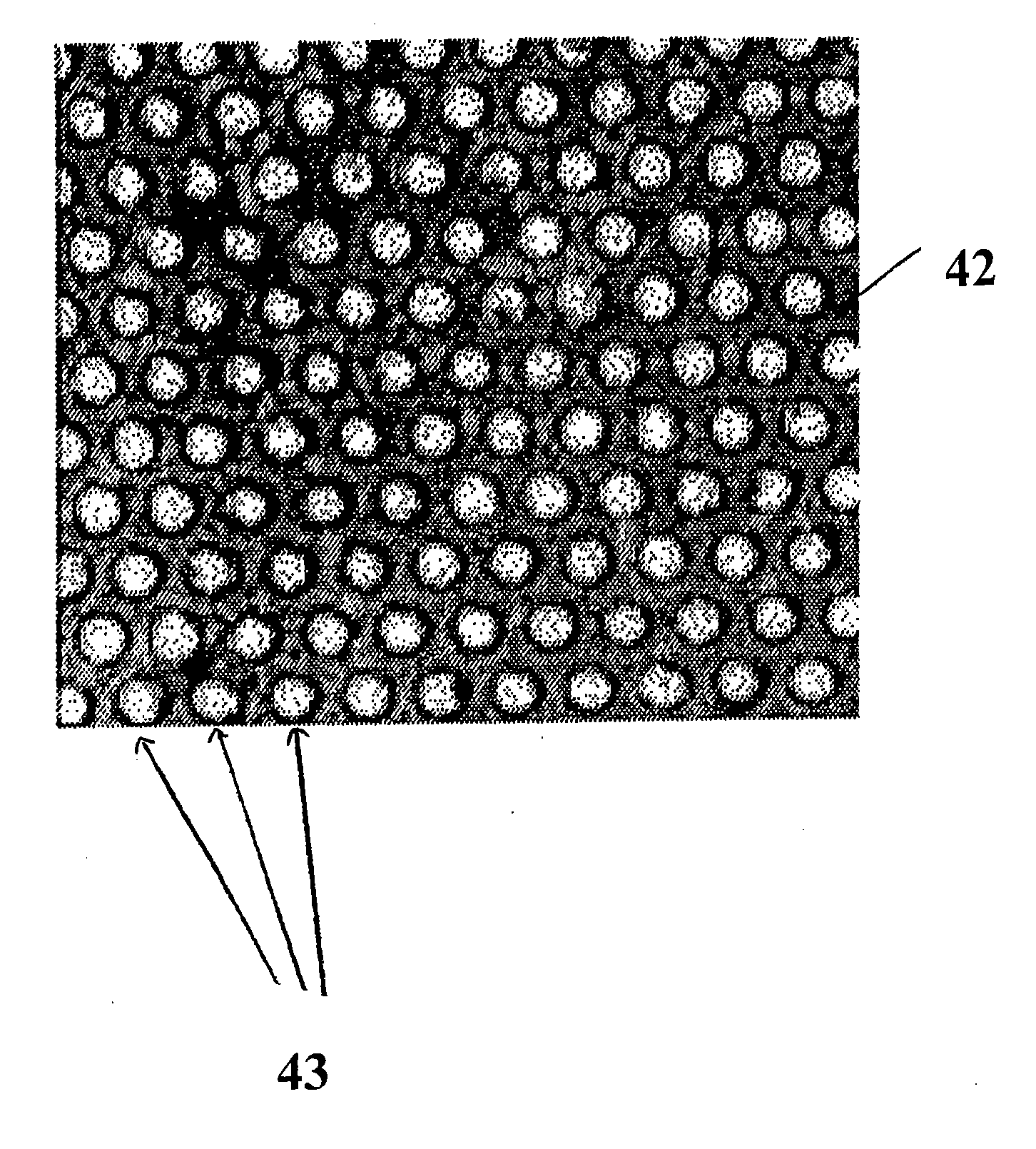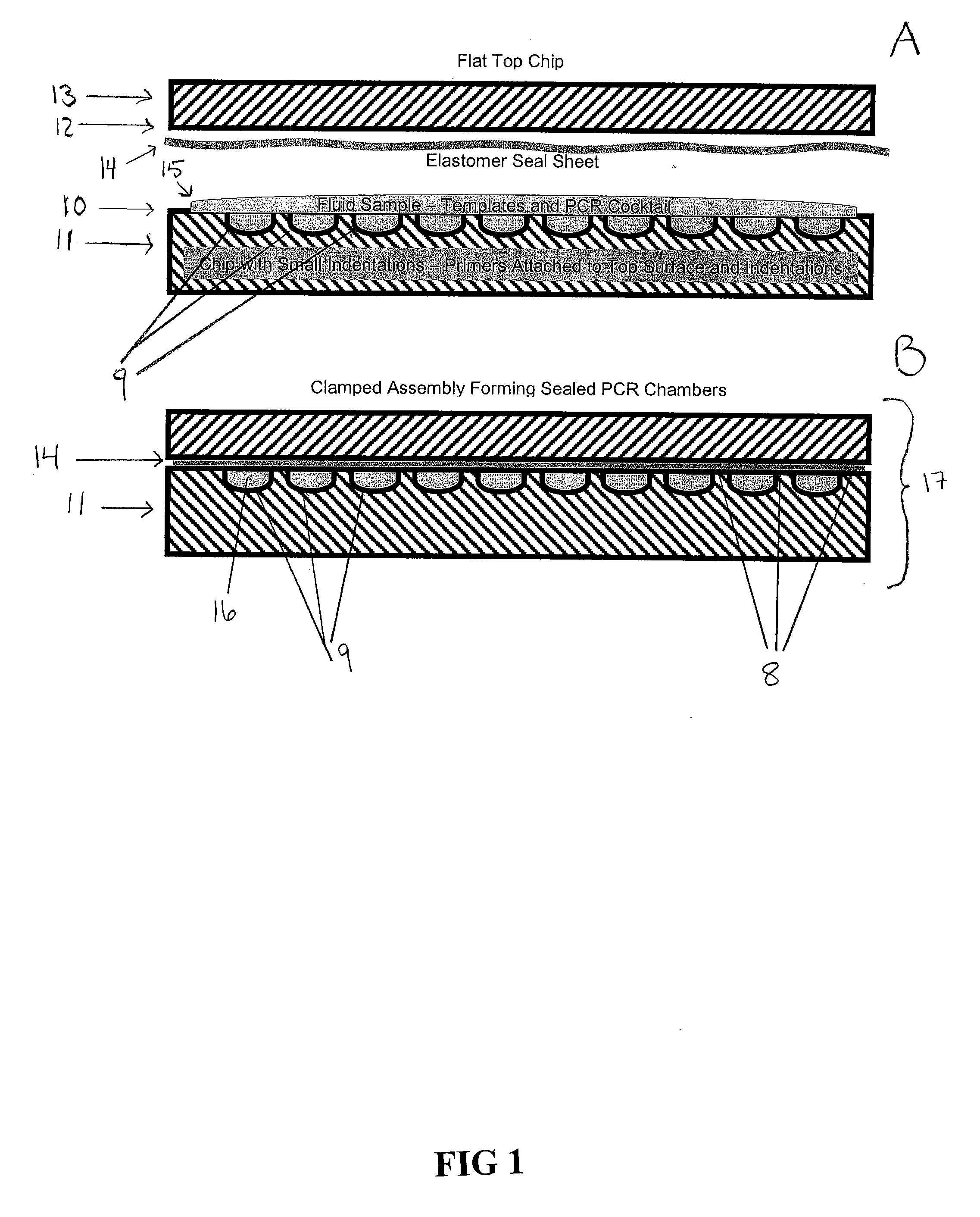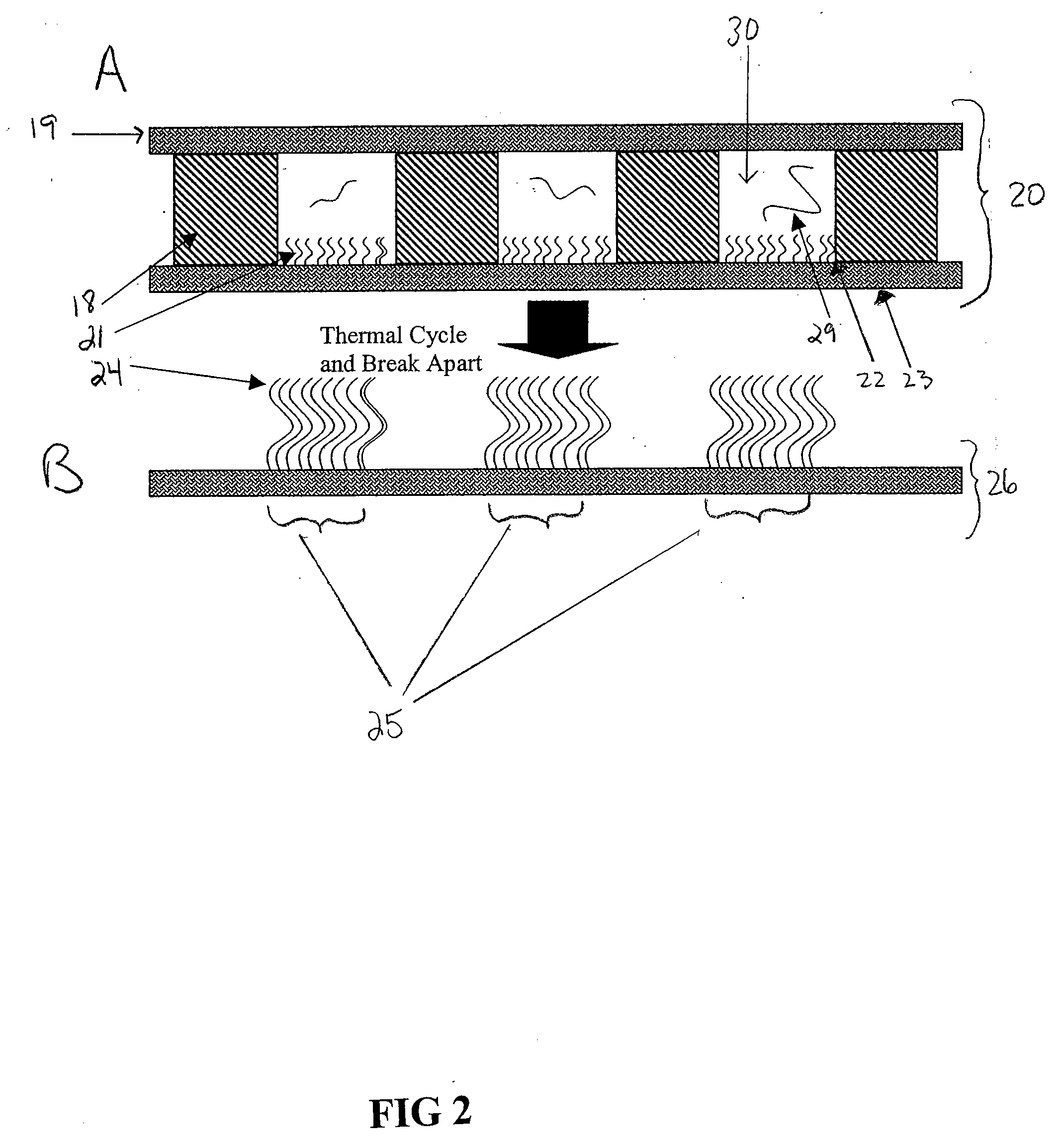Methods And Devices For Amplification Of Nucleic Acid
a nucleic acid and amplification technology, applied in biochemistry apparatus and processes, laboratory glassware, library creation, etc., can solve problems such as failure, achieve high solid-surface pcr efficiency, improve reaction efficiency, and maximize the effect of generating
- Summary
- Abstract
- Description
- Claims
- Application Information
AI Technical Summary
Benefits of technology
Problems solved by technology
Method used
Image
Examples
example 1
[0075]In this example, the generation of prototype gaskets (for use as a middle piece in one embodiment of the device, see FIG. 2) by laser drilling holes through polymer films is described. Both polyimide and polycarbonate sheets have been employed and thicknesses of both 13 microns and 50 microns have been tested. FIG. 5 shows one embodiment of a prototype gasket fabricated from 25 micron thick polyimide film (42) with 30 micron holes (43) drilled at 50 micron spacing several hundred at a time by an Excimer laser system.
example 2
[0076]In this example, a prototype molded piece of polydimethylsiloxane (PDMS) material was employed which had 40 micron wells as small reaction chambers. The piece was molded using a micromachined silicon wafer as the negative mold for the PDMS. When cured, PDMS is a flexible polymer which is frequently used to create microchannel fluidic systems for a variety of applications. The PDMS piece had a pattern of 40 micron holes at 200 micron spacing. It was clamped against an epoxide activated microarray slide (Corning, Corning, N.Y.) which was covered with a solution of oligonucleotide templates with an amine group on the 5′ end and a hairpin on the 3′ end (used for extension priming). This entire assembly was left overnight for the amine groups to bond with the epoxy groups. The assembly was then taken apart and a single base extension reaction with labeled nucleotide and Klenow fragment polymerase was performed on the slide. The slide was scanned in a General Scanning ScanArray 4000...
example 3
[0077]In this example, solid phase PCR is described. The feasibility of device shown in FIG. 2 was demonstrated by performing the reaction in a somewhat larger enclosed chamber on a glass chip. The Corning epoxide glass surface was spotted in two places with a forward PCR primer attached through an amino group at the 5′ end. The primer was designed to contain a linker that would allow the primer to be elevated away from the glass surface. The linker structure contained a 5′ amino group and two 18 atom hexa-ethyleneglycol linkers. The reverse PCR primer was free in solution and had a fluorescent label at the 5′ end. Labeled ten-mer poly-T oligonucleotides were also spotted onto the glass surface outside the reaction chamber with the same linker attachment groups. The reaction chamber was formed around the bound forward primers by a one cm square adhesive gasket and a thin plastic barrier. The PCR reaction solution was added inside the gasket and then sealed, with the barrier. The sli...
PUM
| Property | Measurement | Unit |
|---|---|---|
| diameter | aaaaa | aaaaa |
| diameter | aaaaa | aaaaa |
| diameter | aaaaa | aaaaa |
Abstract
Description
Claims
Application Information
 Login to View More
Login to View More - R&D
- Intellectual Property
- Life Sciences
- Materials
- Tech Scout
- Unparalleled Data Quality
- Higher Quality Content
- 60% Fewer Hallucinations
Browse by: Latest US Patents, China's latest patents, Technical Efficacy Thesaurus, Application Domain, Technology Topic, Popular Technical Reports.
© 2025 PatSnap. All rights reserved.Legal|Privacy policy|Modern Slavery Act Transparency Statement|Sitemap|About US| Contact US: help@patsnap.com



